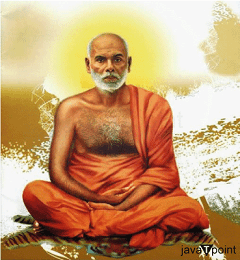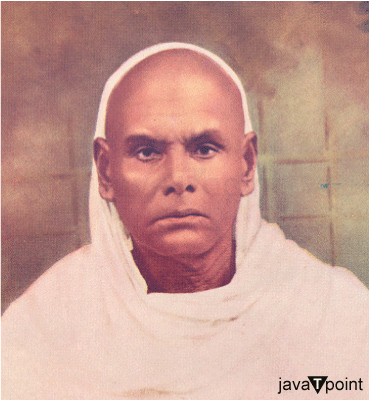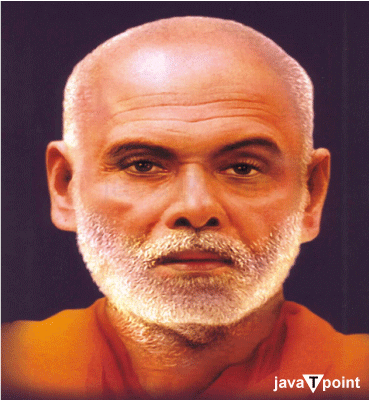Sree Narayana Guru
IntroductionSree Narayana Guru, from India, was a well-known philosopher, spiritual figure, and social reformer. He actively opposed the pervasive social inequities in Kerala's caste-based society and worked to advance social equality and spiritual enlightenment. It is important to remember that he was a human who supported society's development rather than a divinity, despite some reports that he was revered as a god. Narayana Guru was born on August 20, 1856, into an Ayurvedic medical family in Chempazhanthy, close to Thiruvananthapuram. In contrast to other members of his society, he studied religious materials in great detail in addition to his Ayurvedic training. He learned from academics, including Raman Pillai Asan, who helped him better grasp the Vedas, Upanishads, and Sanskrit literature. He embarked on an exploratory voyage through Tamil Nadu and Kerala, where he met prominent people like Chattampi Swamikal and Ayyavu Swamikal, who introduced him to yoga and meditation. He spent eight years doing yoga and meditation in the Pillathadam cave at Maruthwamala due to his quest for spiritual truth. The consecration of an idol of Shiva at Aruvippuram in 1888 was one of his notable deeds. As Guru said that the consecrated idol represented an "Ezhava Shiva," rejecting the idea of caste-based deities, this act posed a challenge to the common caste-based hierarchy in the community. This incident was a turning point in his life. It helped pave the way for establishing the Sree Narayana Dharma Paripalana Yogam (SNDP Yogam), a group dedicated to improving the lives of those in underprivileged social groups. Sree Narayana Guru promoted the value of spirituality, equality, and education throughout his life. He established schools for kids from poorer castes, giving them free education and emphasizing the value of education for empowerment. He also constructed temples on various sites to promote a sense of community and harmony among the various facets of society. Beyond Kerala, Sree Narayana Guru also visited Sri Lanka and made a significant impact there. Right up to his death on September 20, 1928, at 72, he kept motivating and directing people. In India, his ideas and deeds still motivate social reform and the desire for equality. Remembering him as a committed social reformer and philosopher rather than a deity is crucial. LegacyThe legacy of Sree Narayana Guru is intricately linked to his struggle against casteism and his endeavors to advance social equality and religious tolerance. Caste prejudice was pervasive in Kerala during the 19th and early 20th centuries, harming people of lower castes like the Ezhavas and untouchable castes like the Paraiyars, tribals, and Pulayars. Sree Narayana Guru's teachings and deeds significantly contributed to societal reform by opposing these discriminatory practices. Here are some significant elements of his legacy:
The efforts of Sree Narayana Guru to combat casteism and advance social equality are still effective and relevant today. His ideas still serve as an example for people and groups striving to build an equitable and inclusive society in India and beyond. Vaikom SatyagrahaIn the Hindu society of Travancore, a princely state in India, there was a massive social protest and movement known as the Vaikom Satyagraha against untouchability and caste-based discrimination. It occurred in the early 20th century and was essential in opposing the then-dominant caste-based social mores and promoting social equality. An incident involving Sree Narayana Guru catalyzed the Vaikom Satyagraha. Guru was allegedly prevented from using a road leading to the Vaikom Temple by a member of an upper caste. This incident sparked criticism and a desire for reform by highlighting society's rigid caste-based limitations and untouchability. Sivagiri PilgrimageThe annual Sivagiri pilgrimage honors the principles and teachings of Sree Narayana Guru and is conducted in Sivagiri, a spiritual and cultural center in Kerala, India. The Sivagiri pilgrimage was created in 1928 with the help of Sree Narayana Guru's followers Vallabhasseri Govindan Vaidyar, T. K. Kittan Writer, and Muloor S. Padmanabha Panicker. Sree Narayana Guru envisioned the Sivagiri pilgrimage to spread several concepts and principles that he thought were crucial for advancing humanity. He recommended that the pilgrimage concentrate on the following objectives:
The pilgrimage's goals were first put off after Sree Narayana Guru died in 1928. However, the first Sivagiri pilgrimage was arranged in 1932, beginning in Elavumthitta in Kerala's Pathanamthitta District. Since then, the pilgrimage has developed into an annual occasion that draws thousands of individuals from various backgrounds. Sree Narayana Guru devotees and followers congregate at the Sivagiri Mutt during the Sivagiri pilgrimage to respect Guru and consider his teachings. The gathering will feature talks, panel discussions, cultural performances, and spiritual exercises that underscore the fundamental beliefs and ideals that Guru has promoted. To preach Sree Narayana Guru's message of social equality, education, and spirituality, the Sivagiri pilgrimage has grown into a significant venue. It also serves as a reminder of the ongoing work to advance Guru's principles and build a more just and peaceful society. 
Writings and PhilosophyThe philosophy and writings of Sree Narayana Guru are based on spirituality, social change, and the propagation of universal values. He left behind a sizable body of literature in the Malayalam, Sanskrit, and Tamil languages that continue to influence and instruct people today. The following are some salient ideas from his writings and philosophy:
The words and ideas of Sree Narayana Guru are still relevant and important in discussions about spirituality, social justice, and the oneness of humanity today. His legacy inspires those working to create a harmonious and just society because of his holistic approach to spiritual teachings and emphasis on social reform. Ashtalakshyangal
Next TopicSatya Pal Malik
|
 For Videos Join Our Youtube Channel: Join Now
For Videos Join Our Youtube Channel: Join Now
Feedback
- Send your Feedback to [email protected]
Help Others, Please Share










